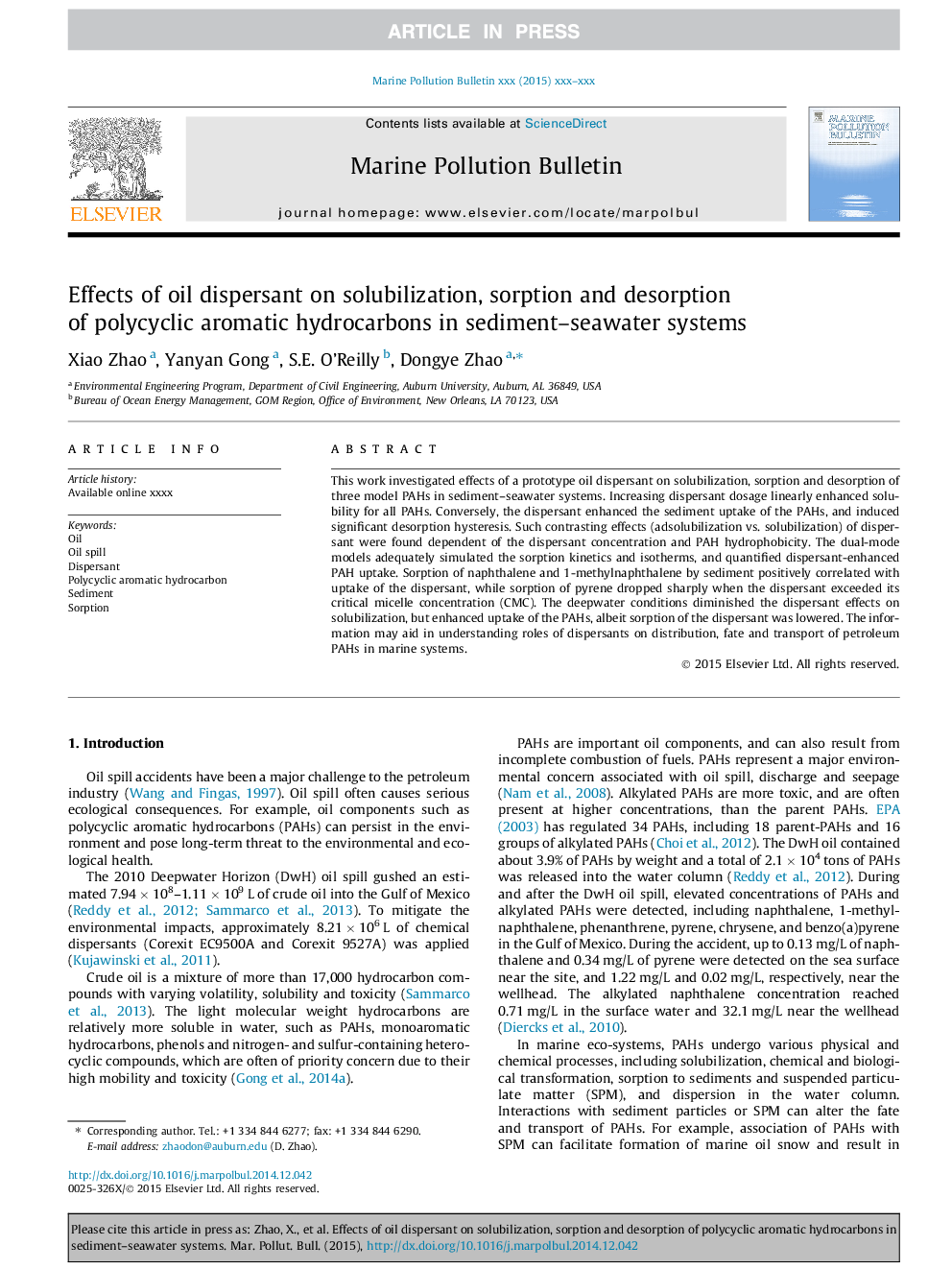| Article ID | Journal | Published Year | Pages | File Type |
|---|---|---|---|---|
| 6357466 | Marine Pollution Bulletin | 2015 | 10 Pages |
Abstract
This work investigated effects of a prototype oil dispersant on solubilization, sorption and desorption of three model PAHs in sediment-seawater systems. Increasing dispersant dosage linearly enhanced solubility for all PAHs. Conversely, the dispersant enhanced the sediment uptake of the PAHs, and induced significant desorption hysteresis. Such contrasting effects (adsolubilization vs. solubilization) of dispersant were found dependent of the dispersant concentration and PAH hydrophobicity. The dual-mode models adequately simulated the sorption kinetics and isotherms, and quantified dispersant-enhanced PAH uptake. Sorption of naphthalene and 1-methylnaphthalene by sediment positively correlated with uptake of the dispersant, while sorption of pyrene dropped sharply when the dispersant exceeded its critical micelle concentration (CMC). The deepwater conditions diminished the dispersant effects on solubilization, but enhanced uptake of the PAHs, albeit sorption of the dispersant was lowered. The information may aid in understanding roles of dispersants on distribution, fate and transport of petroleum PAHs in marine systems.
Related Topics
Physical Sciences and Engineering
Earth and Planetary Sciences
Oceanography
Authors
Xiao Zhao, Yanyan Gong, S.E. O'Reilly, Dongye Zhao,
